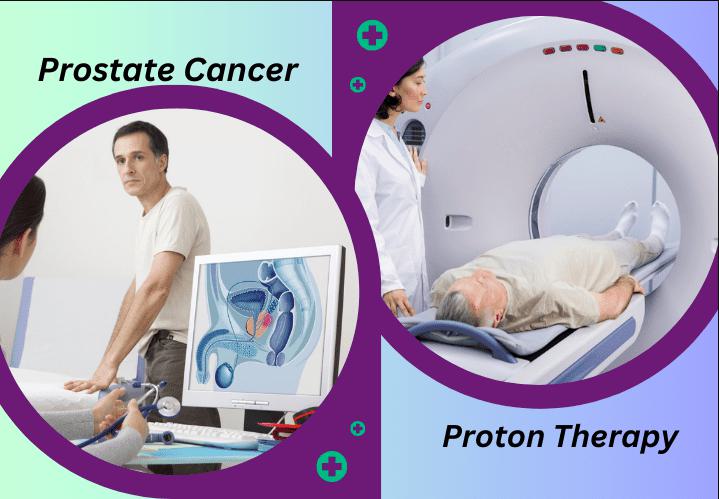Prostate cancer is one of the most common cancers among men worldwide, and advances in medical technology have made treatment more precise than ever before. One of the most innovative approaches is proton therapy for prostate cancer, a form of radiation treatment designed to minimize damage to surrounding healthy tissues. This technique has gained significant attention for its potential to improve outcomes while reducing side effects.
For patients seeking highly targeted treatment, proton therapy provides a promising option. Understanding how it works, its benefits, and its limitations can help patients and families make informed decisions about prostate cancer care. This article explores the details of proton therapy, from its definition to the latest research and patient support resources.
Definition and Overview
Proton therapy for prostate cancer is a type of radiation therapy that uses protons instead of traditional X-rays. Protons are positively charged particles that can be controlled to deliver radiation directly to the tumor with great precision. Unlike conventional radiation, which passes through the body, proton beams stop at the tumor site, minimizing exposure to nearby organs such as the bladder and rectum. This precision makes proton therapy an appealing choice for prostate cancer treatment.
Types
There are two main types of proton therapy delivery systems:
- Passive Scattering Proton Therapy (PSPT): A more traditional method that spreads the proton beam over the tumor area.
- Pencil Beam Scanning (PBS): Also known as intensity-modulated proton therapy (IMPT), this advanced technique delivers protons in a fine beam, “painting” the tumor layer by layer for greater accuracy.
PBS is increasingly preferred because it allows highly customized treatment plans tailored to the patient’s anatomy and tumor location.
Causes and Risk Factors
While the exact cause of prostate cancer remains unknown, several factors increase the risk:
- Age: Risk rises significantly after age 50.
- Family history: Having close relatives with prostate cancer increases likelihood.
- Genetics: Certain inherited mutations, such as BRCA1 and BRCA2, play a role.
- Lifestyle factors: High-fat diets, obesity, and low physical activity may contribute.
- Ethnicity: African American men have a higher risk and often more aggressive disease.
Symptoms and Early Warning Signs
Prostate cancer often develops silently, but some signs may include:
- Frequent urination, especially at night
- Difficulty starting or stopping urination
- Weak urine stream
- Blood in urine or semen
- Erectile dysfunction
- Pelvic discomfort or pain
These symptoms can also result from non-cancerous conditions like an enlarged prostate, so professional evaluation is essential.
Diagnosis
Diagnosis of prostate cancer involves a combination of tests:
- Prostate-Specific Antigen (PSA) blood test
- Digital Rectal Exam (DRE)
- MRI scans for detailed imaging
- Biopsy to confirm cancer presence and grade
Once diagnosed, staging tests help determine if the cancer has spread, which guides the treatment approach.
Treatment Options
Treatment for prostate cancer varies depending on stage, age, and overall health:
- Active surveillance for slow-growing cancers
- Surgery (prostatectomy) to remove the prostate
- Radiation therapy, including external beam, brachytherapy, and proton therapy for prostate cancer
- Hormone therapy to reduce testosterone levels
- Chemotherapy or immunotherapy for advanced cases
Proton therapy stands out for its ability to deliver high radiation doses directly to the tumor while sparing healthy tissues, often resulting in fewer long-term side effects.
Prevention and Lifestyle Recommendations
Although prostate cancer cannot always be prevented, lifestyle adjustments can lower risk:
- Maintain a balanced diet rich in fruits, vegetables, and whole grains
- Exercise regularly to support immune health
- Maintain a healthy weight
- Avoid smoking and excessive alcohol consumption
- Discuss regular screenings with your doctor, especially if at higher risk
Prognosis and Survival Rates
Prognosis for prostate cancer is generally positive, especially when detected early. The 5-year survival rate for localized and regional prostate cancer is nearly 100%. Proton therapy may improve outcomes for certain patients by reducing treatment-related complications, helping maintain a better quality of life during and after therapy.
Latest Research and Innovations
Research on proton therapy for prostate cancer is ongoing, with studies focusing on:
- Long-term survival outcomes compared to traditional radiation
- Improved imaging and planning techniques for more precise targeting
- Reducing treatment costs and expanding access
- Combining proton therapy with immunotherapy or hormone therapy for advanced cases
Emerging innovations are making proton therapy more efficient and widely available.
Coping and Support for Patients
A prostate cancer diagnosis can be overwhelming, but emotional and practical support makes a difference. Patients are encouraged to:
- Join prostate cancer support groups
- Seek counseling or therapy for emotional well-being
- Stay informed and actively involved in treatment decisions
- Engage in stress-reducing activities like meditation, yoga, or walking
- Rely on family, friends, and healthcare teams for ongoing encouragement
Conclusion
Proton therapy for prostate cancer represents a cutting-edge treatment option that combines precision with reduced side effects. While not every patient may need or qualify for this therapy, it has become an important choice in modern prostate cancer care. By staying informed about treatment options, prevention strategies, and support resources, patients can face the journey with greater confidence and hope.
FAQ
1. What is proton therapy for prostate cancer?
It is a targeted radiation treatment using proton beams that stop at the tumor site, minimizing damage to healthy tissues.
2. Is proton therapy more effective than traditional radiation?
Both can be effective, but proton therapy often results in fewer side effects due to its precision.
3. Who is eligible for proton therapy?
Eligibility depends on cancer stage, tumor location, and overall health. A radiation oncologist can provide guidance.
4. Are there side effects of proton therapy?
Yes, but they are generally fewer than with traditional radiation. Possible effects include fatigue, urinary issues, and bowel discomfort.
5. Is proton therapy widely available?
Access is limited compared to conventional radiation, as it requires specialized equipment and facilities.
6. Does insurance cover proton therapy for prostate cancer?
Coverage varies depending on the insurance provider and country. Patients should confirm with their insurance company.

